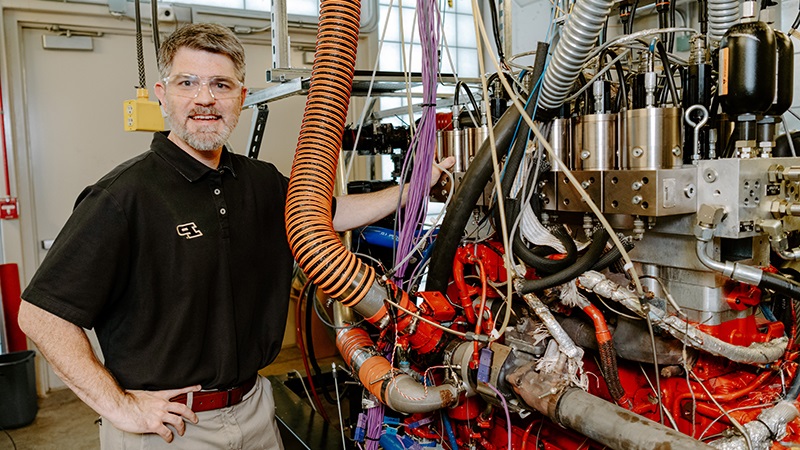Indiana
New EPA rules are based on studies on diesel engines done at Purdue

West Lafayette, Indiana – The pollution produced by heavier vehicles and tractor-trailers’ engines is being reduced thanks to new technology.
Some of the technology, which formed the basis for the EPA’s most recent tailpipe limits for heavy-duty trucks, was developed by scientists at Purdue University’s Herrick Labs.
Greg Shaver, the lab’s director and a professor of mechanical engineering, has participated in a nationwide initiative to research how to lower carbon emissions and increase diesel engines’ effectiveness. Shaver’s duties also involve deactivating cylinders.
“We can make (diesel engines) act smaller when we need to use less power,” Shaver said. “Instead of running all six cylinders, we can use 3 or 4, or maybe even 2 to produce power. By making these engines act smaller, we can reduce fuel consumption and CO2 emissions from the engine.”
In December, the EPA published the final version of the new truck tailpipe pollution regulations. In a Purdue press release, Shaver stated that the regulations were anticipated to go into force in 2027.
-

 Local News2 weeks ago
Local News2 weeks agoMan who won the primary election despite being accused of murder was found guilty of a lesser crime
-

 Local News2 weeks ago
Local News2 weeks ago252 Indiana towns receive funding for the construction of roads and bridges
-

 Local News2 weeks ago
Local News2 weeks ago4/20 Day: According to an expert, Indiana’s marijuana stigma is fading
-

 Indiana2 weeks ago
Indiana2 weeks agoWhile staff members get ready to move into a new structure, the Westfield Washington Public Library shutters
-

 Local News2 weeks ago
Local News2 weeks agoVehicle crashes into the Monroe County food bank
-

 Local News2 weeks ago
Local News2 weeks agoNew Fort Wayne mayor, its 1st Black leader, in caucus to replace late mayor
-

 Local News1 week ago
Local News1 week agoIndiana Chamber of Commerce program recognizes Indiana Members Credit Union
-

 Local News1 week ago
Local News1 week agoThe biggest teachers union in Indiana supports Jennifer McCormick for governor






Leave a Reply